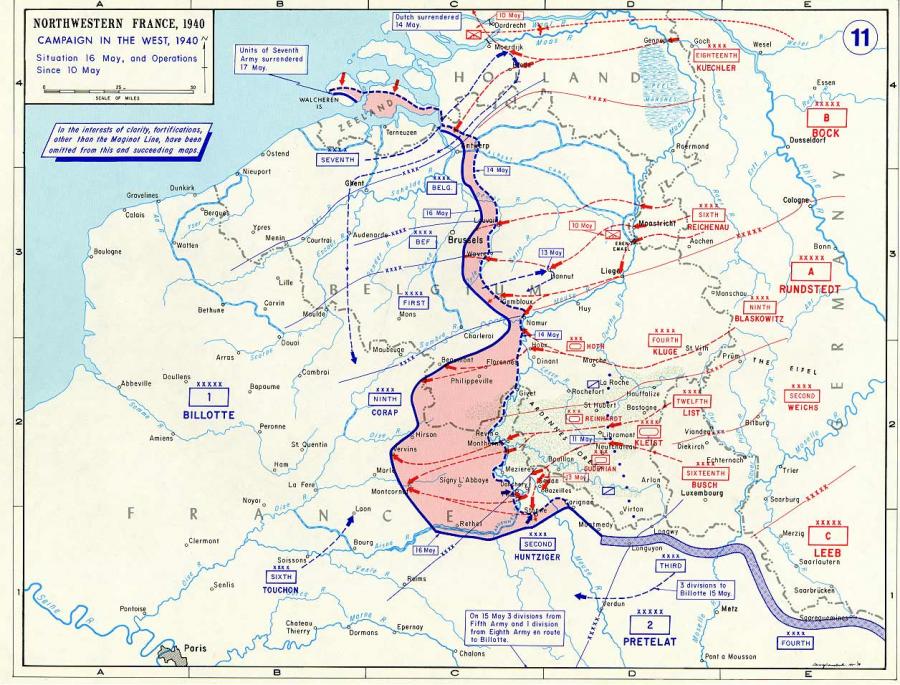Northwest Europe 10 May-16 May 1940: German Breakthrough
Early on the mild spring morning of May 10, 1940 the Luftwaffe hammered Allied airfields across Belgium, France, and the Netherlands and German paratroopers quickly captured intact key bridges over the River Meuse, Maas in the Netherlands, at Rotterdam, Moerdijk, and The Hague. The Dutch Government surrendered at noon on May 15th. As the Wermacht efficiently subjugated Holland, in the early morning hours on May 10th, 85 men from the 7th Fallschirmjager Division quietly swooped in on gliders to capture the Belgian flagship fortress. With Eben Emael neutralized and German possession of several bridges across the Meuse River, the German army freely advanced into Belgium. The Allied forces reacted quickly, recognizing the German frontal advance into Northern Belgium and the Netherlands as the German invasion's main axis. In total, 35 Allied divisions rushed northeastward according to the pre-existing defensive plan to the Dyle River line in Northern Belgium between Antwerp and Namur.
Meanwhile, Germany's powerful tank heavy spearheads had traversed 70 miles of excellent defensive terrain in the Ardennes in only two days and then crossed the Meuse River in the face of resistance from the badly outnumbered and outgunned French defenders in the region; two poorly equipped and trained French Armies, the 2nd and 9th Armies. By nightfall on May 13th, German armored formations, comprising 7 panzer and 3 motorized divisions, 1,222 tanks, 545 half tracks, and 39,373 other motor vehicles, streamed across the Meuse.
Map Courtesy of: Department of History, United States Military Academy


